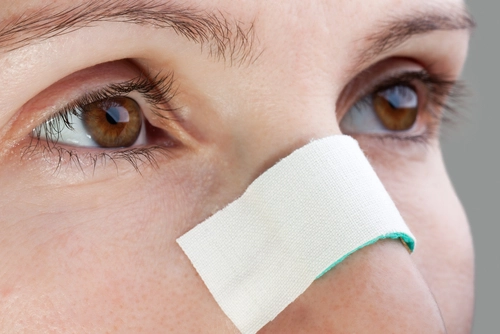Otolaryngology Coding Alert
Check Your Answers to 3 Common Allergy Questions to Keep Claims on Track
Plus: Watch for opportunities to include E/M with the allergy care.
Pollen coated surfaces across the country mean it’s prime season for your otolaryngologist to test patients for allergies. The range of allergy tests available can lead to miscoding and confusion, but help is on the way. Let the answers to these three FAQs boost your coding confidence.
Question 1: How Do You Report Percutaneous Skin Allergy Tests?
The most common type of skin test for allergies is the prick or scratch test (also called a percutaneous test). The healthcare provider pricks or scratches the patient’s skin, then administers a tiny drop of a possible allergen to the scratch or puncture to test for an allergic reaction.
You should code a percutaneous skin test with 95004 (Percutaneous tests [scratch, puncture, prick] with allergenic extracts, immediate type reaction, including test interpretation and report, specify number of tests). Other terms for a percutaneous test include scratch test, prick test, puncture test, or Multi-Test.
Pay attention: The descriptor for 95004 states, “specify number of tests.” This instruction refers to the number of allergens tested, however, not the number of scratches, says Pamela Biffle, CPC, CPC-P, CPC-I, CPCO, owner of PB Healthcare Consulting and Education, Inc., in Austin, Texas.
The physician often wants to test several substances at once (often in blocks of eight). During allergy season these might include ragweed, oak, maple, grass, or other plant pollens.
“Each substance counts as a separate test,” Biffle says. “Total the number of allergens administered and put that number in the ‘units’ field of your claim form.”
Example: Testing for ragweed, oak, and grass would translate to reporting 95004 x 3.
Question 2: How Do You Handle Claims Without a Provider Present?
Nurse practitioners (NPs) or physician assistants (PAs) can provide some in-office services without the direct supervision of a physician or without the physician being present in the office. Some types of allergy injections can fall in this category.
What to do: Bill the allergy injection under the NPI of the non-physician practitioner. Remember, however, that most allergy tests follow the supervision rules for diagnostic tests, which although they look like the rules for incident to services, they actually fall under separate rules within the Medicare Internet Only Manual (formerly the Medicare Carriers Manual).: a physician must be present in the office (known as direct supervision) before the NPP can administer the test and bill it under the physician’s NPI. Some tests require the physician to be in the exam room with the NPP (known as personal supervision), but these tests are uncommon for otolaryngologists. Administration of the allergy shots are incident to services and follow all of the incident to rules.
Bottom line: Billing an allergy test under a physician’s NPI when that physician was not present in the office at the time is a serious compliance violation. If one of your NPPs administers an allergy injection and is able to bill it under a physician’s NPI, the NPP should include a note in the chart regarding which physician was present at the time. That will help you support the billing in case of an audit.
Question 3: How Do You Account for the E/M Service?
Allergy testing codes such as 95004 and CPT® codes for allergy immunization injections include the work of a standard E/M service during that same encounter. Because of this, you should not bill a separate E/M office visit code for the time spent talking with the patient about risks and benefits of treatment or waiting for the test result – especially if the test or injection was the reason for the scheduled visit.
Caveat: There might be times when your physician provides a separate service in addition to the allergy test or treatment. If you have sufficient documentation of two separate and distinct services, you can possibly report a separate E/M code (such as 99212-99215, Office or other outpatient visit for the evaluation and management of an established patient...). Append modifier 25 (Significant, separately identifiable evaluation and management service by the same physician or other qualified health care professional on the same day of the procedure or other service) to the E/M code to explain to the payer that a separate service was performed in addition to the allergy service. Include all documentation to support your billing.
Example: A patient comes to your office for his allergy shot. He complains of an ear ache after swimming, so the doctor performs an E/M exam focused on the otalgia complaint. The physician can bill an E/M with a 25 modifier in addition to the allergy shot administration; attach the diagnosis for the otalgia to the E/M service code.
Related Articles
Otolaryngology Coding Alert
- Procedure Focus:
Trying to Capture Trach Tube Changes With E/M Codes? Here's How.
Tip: Get clear documentation of the complaint. According to coding guidelines, 31502 (Tracheotomy tube change [...] - Allergy Tests:
Check Your Answers to 3 Common Allergy Questions to Keep Claims on Track
Plus: Watch for opportunities to include E/M with the allergy care. Pollen coated surfaces across [...] - ICD-10:
Dig Into the Options for Lymphadenopathy and Lymphadenitis
The terms are not interchangeable. If a patient sees your otolaryngologist because of enlarged lymph [...] - Reader Question:
Encourage Providers to Document Laterality for More Accurate Dx
Question: Our provider diagnosed a patient with recurrent otitis media and chronic otitis media with effusion. [...] - Reader Question:
Audiologist Must Have Her Own NPI for Billing Purposes
Question: How do I bill for an audiology service if the audiologist hasn’t yet received her [...] - Reader Question:
Avoid Consultation Codes on Medicare Claims
Question: I have a denial for 99253 from Anthem Senior Advantage stating that this code is [...] - Reader Question:
Implanted Device Does Not Equal Foreign Body
Question: What is the correct ICD-10-CM code for a retained and malpositioned T-tube? I’m using 69424-RT [...] - Reader Question:
Think Anatomic Site, Then Addition, for Lesion Excision Coding
Question: I’m coding for two separate malignant lesions on the scalp. Do I add both lesion [...] - You Be the Coder:
File This for Flex Laryngoscopy With Meds
Question: I’ve not found any information about reimbursement for 31599. Considering that, what code do we [...]




